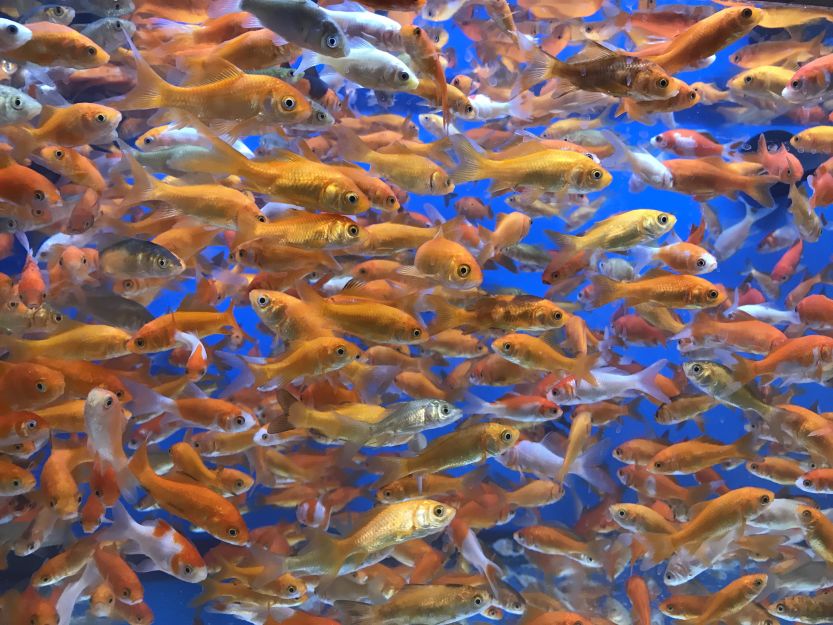
If they were healthy before you transferred them, I suspect they are still exploring their new home. It's still pretty cold in Owego at this time of year (May). If the water was 10C or below, they won't be very active or interested in food. Having netting over the pond eliminates predator problems and would also mean anything dead floating to the surface would be seen. Haven't seen any dead ones floating.Ĭould they be at the deep side of the pond and not really swimming and exploring?Īssuming you tested the water to make sure it was the same pH as their water, and you equalized the water temperatures before releasing them, I wouldn't worry too much yet. The pond is covered with netting but the temperature was and is on the chilly side. Finally, their diet must contain at least 30% protein content for optimal growth.Put some feeder fish in my outdoor pond about four days ago and haven't seen any of them. A sinking food source would be best otherwise they might end up swallowing them whole which can lead to various health issues including extended belly. At least three times a day they should be fed.


When feeding for long periods, their bodies may become puffy or swollen as a result other signs of stress could emerge as well.įeeder goldfish require food that provides all of the essential nutrients, as well as plenty of oxygen in order to thrive. In their natural habitat, goldfish eat algae, plant matter, invertebrates such as insects or crustaceans like crustaceans.įeeder goldfish search the bottom of their tank for food, as well as for leftover pieces stuck to plants and rocks. Goldfish are omnivorous fish that feed on an assortment of sources for nutrition. When feeding your goldfish a nutrient-rich diet consisting of commercial pellets or flakes designed for bottom feeders as well as live or frozen foods such as brine shrimp, bloodworms, daphnia or fresh vegetables it is crucial that their health remains optimal. Goldfish can be kept in tanks that hold up to 20 gallons, equipped with an aquarium filter and pump for filtration of water and temperature regulation. When you see one swimming along the surface of the tank, that could be its signal for feeding time just don’t mistake their behavior as air pipetting as this could reduce oxygen levels significantly – rather provide your goldfish with sinking pellets such as Hikari Goldfish Bio-Gold for optimal bottom-feeding success! Goldfish are natural bottom feeders, searching the substrate for algae, food scraps and any debris left by other fish. When your goldfish suddenly stops munching pebbles or gravel to swim closer to the surface, this could be an indicator that it needs food – however be wary not to misinterpret this behavior with “piping or gulping air at water’s surface”, as this may indicate low oxygen levels instead. Goldfish are natural bottom feeders and will search for sustenance in their tank or pond’s substrate for food, such as organic matter or debris near the surface. When kept with other fish species they are vulnerable to tank bullying which should be addressed quickly before it escalates into physical confrontation or physical fights escap. When in their natural environments they occupy fresh inland waters or temperate climate ponds. Habitatįeeder goldfish are opportunistic eaters and will feed on just about anything they can fit into their mouths, such as store-bought pellets, flakes, freeze-dried treats, live foods like worms and daphnia as well as store-bought treats like pellets or flakes.


Gel foods have also become a growing trend as an excellent combination of inverts and plants that offer essential energy sources. In natural settings like lakes and rivers, bottom feeder fish play an integral part in keeping sediment at bay similarly in an aquarium environment they perform this same role by keeping tank substrate clean while digesting waste products.įrogfishes also scavenge dead fish and invertebrates for food, and have an inferior mouth structure with more downward-curved jaws than other species, which enables them to easily collect food at the bottom of tanks or ponds.įeeding these fish correctly means providing both floating and sinking foods to ensure that they receive all of the necessary nutrition, such as flakes, granules, worms, brine shrimp and live foods like spirulina. Bottom feeder fish can help improve the water quality in an aquarium and add some variety.


 0 kommentar(er)
0 kommentar(er)
